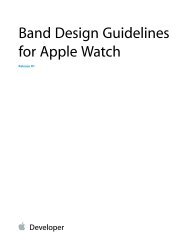2007_Subprime_Shorting-Home-Equity-Mezzanine-Tranches-1
2007_Subprime_Shorting-Home-Equity-Mezzanine-Tranches-1
2007_Subprime_Shorting-Home-Equity-Mezzanine-Tranches-1
Create successful ePaper yourself
Turn your PDF publications into a flip-book with our unique Google optimized e-Paper software.
Footnote Exhibits - Page 0927<br />
Strictly private & confidential<br />
Summary<br />
* Investor expresses a bearish view on the subprime US RMBS market (or the US Consumer or<br />
US <strong>Home</strong> Prices) by shorting (or buying protection on) selected <strong>Home</strong> <strong>Equity</strong> ABS credits<br />
* We believe this product is the most efficient way to express these views; more efficient than<br />
shorting stocks of homebuilders, REITs, the S&P 500, etc. We are interested in hearing of other<br />
ideas<br />
* Since 2003, spreads for Baa3 and Baa2 have compressed. But if anything, risk of a housing<br />
bubble / defaults has only increased with the continued proliferation of alternative mortgage<br />
products such as IOs, silent seconds, stated-income loans and option ARMs. These products<br />
have become quite popular as home price increases until very recently outstripped wage<br />
growth. The percentage of subprime mortgages originated that were 10 mortgages grew from<br />
virtually zero in 2002 to around 30% in 2005 and 2006. The percentage of subprime mortgages<br />
originated that were stated-income mortgages grew from around 25% in 2000 and 2001 to over<br />
40% in 2005 and 2006. Mortgages with 40 or even 50-year terms were recently introduced, and<br />
have quickly become popular in subprime lending.<br />
* After a brief widening near the end of 2005, spreads for Baa2 and Baa3 home equity bonds<br />
tightened for most of the first half of 2006, reflecting strong demand from CDOs. Demand from<br />
CDOs is a result of worldwide excess capital chasing yieldy products. Such demand, may<br />
prove elusive in an adverse market environment. Spread tightening lost its momentum in April,<br />
as the CDO's arbitrage has been squeezed. In fact, spreads gradually widened out from May to<br />
August. As the housing data has become increasingly bearish, this widening trend accelerated<br />
in September with Baa3 spreads nearly 100 bp wider than the April tights. After a brief rebound<br />
in October, spreads resumed widening again in November and December.<br />
Deutsche Banik<br />
All numbers shown in this presentation are indicative and are based on a sample portfolio. Actual numbers will be<br />
different and will depend on the actual portfolios selected.<br />
3



